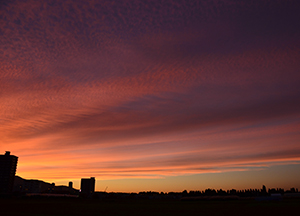Field Science Center for Northern Biosphere
- 2001
- Field Science Center for Northern Biosphere was established as one of Common Use Institutes by integrating “Marine Station” and “Institute of Algological Research” in Faculty of Science, “Experiment Farm”, “Botanic Garden”, “Livestock Farm” and “Experimental Forests” in Faculty Agriculture, and “Toya Lake Station”, “Usujiri Fisheries Station” and “Nanae Fish-Culture Experimental Station” in Faculty of Fisheries Science, as well as “Oshoro Marine Station”.
- 2002
- Research group “Marine Ecosystem Change Analysis” was established in Section of Ecosystem Conservation.
- 2004
- Hokkaido University was reformed to National University Corporation Hokkaido University.
- 2012
- Muroran Marine Station was moved to Muroran Funami-cho in Muroran City.
- 2015
- Field Science Center for Northern Biosphere became a joint-use facilities (research facility).
History of old facility
Experiment Forest in Faculty of Agriculture(Present:Experimental Forest in Forest Research Station)
- 1901
- The First Fundamental Forest (Later Uryu University Forest) was established at Sapporo Agricultural College.
- 1902
- The Second Fundamental Forest (Later Nakagawa University Forest) was established at Sapporo Agricultural College.
- 1904
- Tomakomai College Experiment Forest (Later Tomakomai University Forest) was established at Sapporo Agricultural College.
- 1912
- Toikanbetsu College Experiment Forest (Later Teshio University Forest) was established.
- 1925
- Wakayama College Experiment Forest (Later Wakayama University forest) was established.
- 1945
- Oshoro Experimental Site was established.
- 1956
- Hiyama College Experiment Forest (Later Hiyama University Forest) was established.
- 1965
- Nayoro Breeding Station was established.
- 1986
- Toyohira Experimental Site was established.
Experiment Farm in Faculty of Agriculture(Present:Experiment Farm in Agro-ecosystem Research Station)
- 1876
- Nogakuen, later the Experiment Farm was established in the Sapporo Agricultural College.
- 1912
- Yoichi Orchard was established.
Botanic Garden, Faculty of Agriculture(Present:Botanic Garden in Agro-ecosystem Research Station:)
- 1884
- Management of the Sapporo museum was transferred from Hokkaido Works Administration Bureau of the Ministry of Agriculture and Commerce to the Sapporo Agricultural College.
- 1886
- The Botanic garden, designed by Dr. Kingo Miyabe, was established.
- 1900
- The Botanic Garden was designated to be national government.
- 1989
- The Museum building and other buildings were designated as National Important Cultural Properties.
Livestock Farm in Faculty of Agriculture(Present:Shizunai Livestock Farm in Agro-ecosystem Research Station)
- 1950
- Hidaka pilot farm was established.
- 1953
- Livestock farm was established in the Faculty of Agriculture.
Marine Station in Faculty of Science(Present:Akkeshi Marine Station in Aquatic Research Station)
- 1931
- Marine Station was established.
Institute of Algological Research in Faculty of Science(Present:Muroran Marine Station in Aquatic Research Station)
- 1933
- Institute of Algological Research was established.
Toya Lake Station in Faculty of Fisheries Science(Present:Toya Lake Station in Aquatic Research Station)
- 1936
- The Hakotade Higher Fisheries College was established.
- 1966
- Toya Lake Station was established in Faculty of Fisheries Science.
Usujiri Fisheries Station in Faculty of Fisheries Science(Present:Usujiri Fisheries Station in Aquatic Research Station)
- 1970
- Usujiri Fisheries Station was established.
Nanae Fish-Culture Experiment Station in Faculty of Fisheries Science(Present:Nanae Freshwater Station in Aquatic Research Station)
- 1940
- The Nanae Fish Culture Experimental Station was established.
- 1966
- Nanae Fish-Culture Experiment Station was established.
Oshoro Marine Station in Common Use Institutes(Present:Oshoro Marine Station in Aquatic Research Station)
- 1908
- Oshoro Marine Station is established in Department of Fisheries, Agricultural College of Tohoku Imperial University.
- 1949
- Oshoro Marine station was established in Faculty of Fisheries Science.
- 1970
- Oshoro Marine Station was moved into Common Use Institutes.
Scroll




